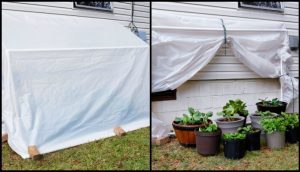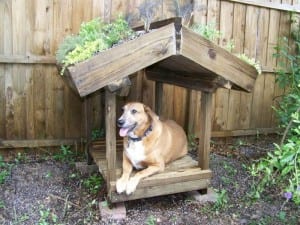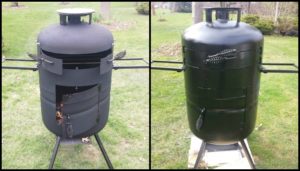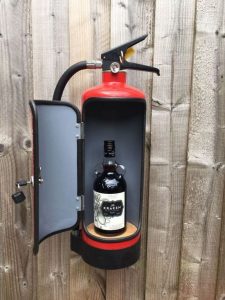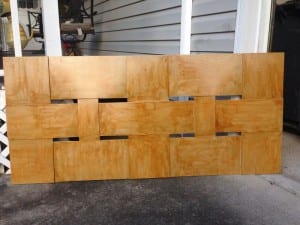Last Updated on May 20, 2024 by teamobn
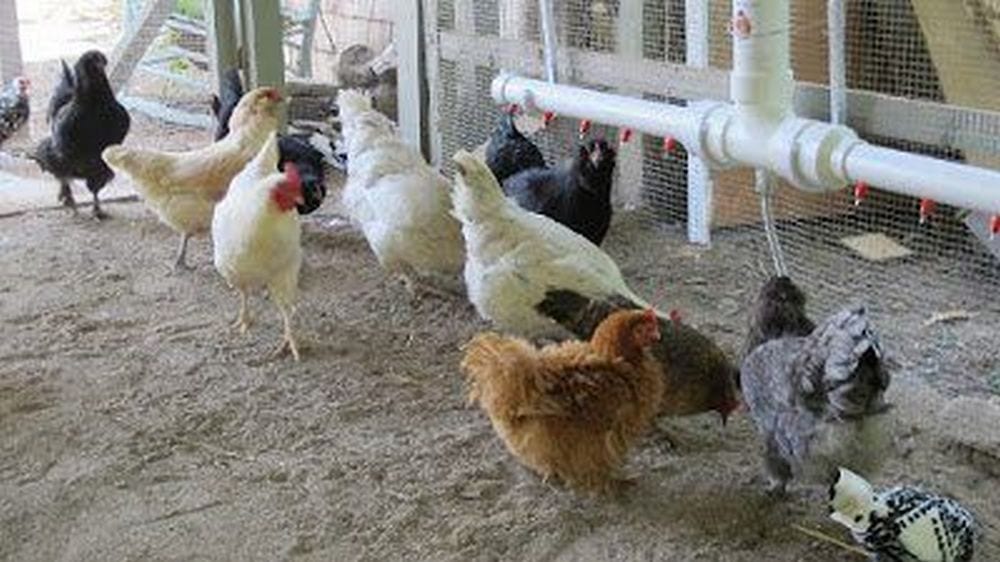
Having a reliable chicken waterer is an absolute necessity when you maintain your very own chicken coop in your backyard. Depriving your chickens of a good water source can result in various health issues, making it imperative to ensure their access to clean water.
Chickens require continuous access to fresh, clean water to maintain their well-being and uphold a consistent egg-laying schedule. When water is either contaminated or scarce, it increases the likelihood of illnesses among your chickens and negatively affects their egg production. This is where an automatic chicken waterer comes in handy.
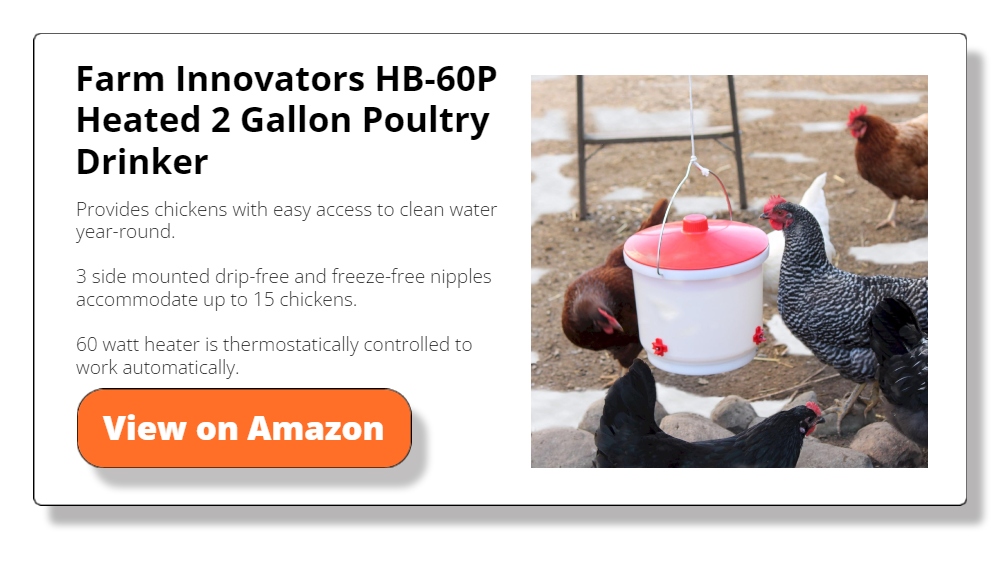
Keeping your chickens healthy and egg production thriving hinges on providing them with a consistent supply of clean water. It’s essential to remember that when you neglect their water needs, your chickens may reciprocate by withholding their precious eggs.
Just like us humans, unclean water can cause a variety of health problems in animals, including dehydration, diarrhea, and even death. Ensuring that your animals have access to clean water is essential to keeping them healthy and happy.
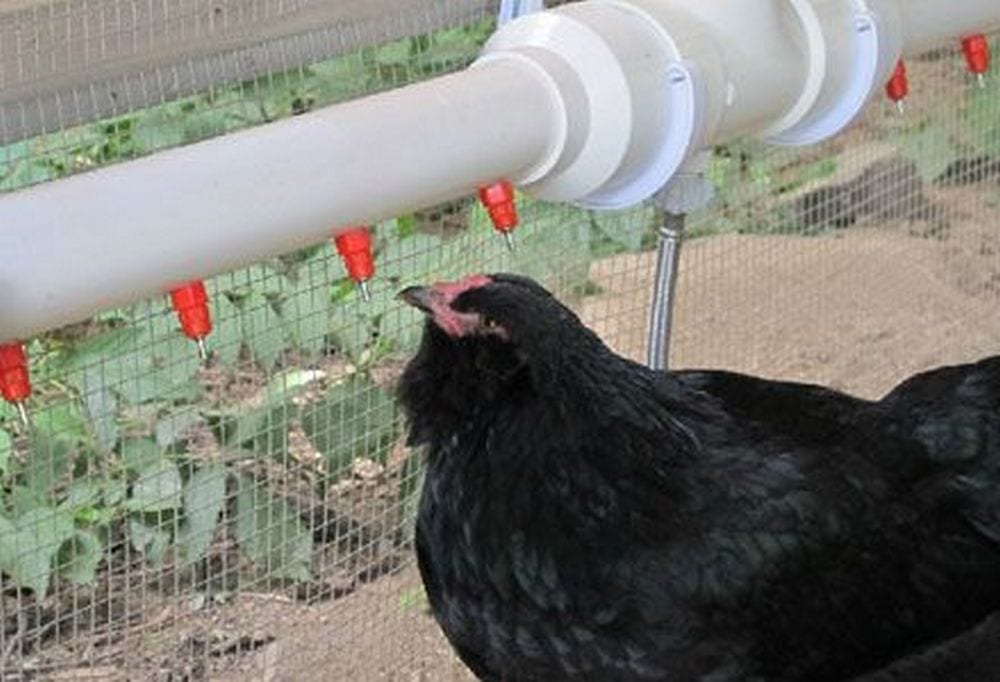
Caring for chickens can be quite demanding, especially when it pertains to preserving water quality. Yet, fret not, for a solution exists for your worries. Opting to invest in a superior chicken waterer thoughtfully designed to minimize the need for ongoing maintenance will alleviate a significant portion of your time and effort, leaving you at ease.
No more gross bedding and droppings to ruin your day! With this game-changing gadget, your feathered friends will always have access to fresh and clean water, without any hassle.
Ensuring that they get a constant supply of clean water can be challenging – but not impossible. With the use of an automatic chicken waterer with nipple drippers, obtaining clean drinking water is as simple as a quick touch.
If you’re in search of a convenient method to supply water to your chickens, your solution lies in poultry nipples. These convenient devices are simple to set up and come at a reasonable cost, rendering them an excellent choice for chicken enthusiasts of all kinds. Plus, using poultry nipples can help cut down on water waste and keep your chickens healthy and hydrated.
So if you’re ready to DIY your own chicken waterer, read on for instructions!
Contents
Building an Automatic Chicken Waterer
Picture this: your chickens enjoying a constant, clean supply of water without you lifting a finger. Sounds like a dream, right? Well, get ready to turn that dream into reality! In this guide, you’ll unlock the secrets to crafting your very own DIY automatic chicken waterer with nipple drippers.
Say goodbye to the daily chore of refilling water containers and hello to more convenient and happier hens. Dive into this poultry paradise of innovation!
Materials
- Plastic bottle, bucket or container, PVC pipes (1Meter 3-inch diameter)
- PVC pipe 2-inch diameter about 10 inches long
- 3pcs PVC end caps: 1pc 2-inch diameter and 2 pcs 3-inch diameter
- stainless steel, screw-in poultry nipple
- silicone sealant
- string, wire, etc. for hanging
Tools
- Drill with
- Drill bit
- one that has the same diameter as the screw-in poultry nipple
- 2-inch hole saw drillbit
NOTES:
This chicken waterer project can vary depending on the materials that you will be using. Plastic bottles, buckets, various containers, or even PVC pipes can serve as suitable materials for this DIY endeavour. Regardless of your chosen materials, the primary objective is to construct an automatic chicken waterer that guarantees simplicity in both utilization and upkeep.
Through the implementation of such an automated waterer system, you ensure a consistent provision of clean water to your chickens—an indispensable element for their overall health and welfare.
Steps
Step 1: When gathering the desired materials for your automatic waterer system, make sure you don’t forget the most important component: the screw-in poultry nipple. These essential pieces will help you create a system that provides a continuous supply of water for your chickens, without the need for frequent refills.
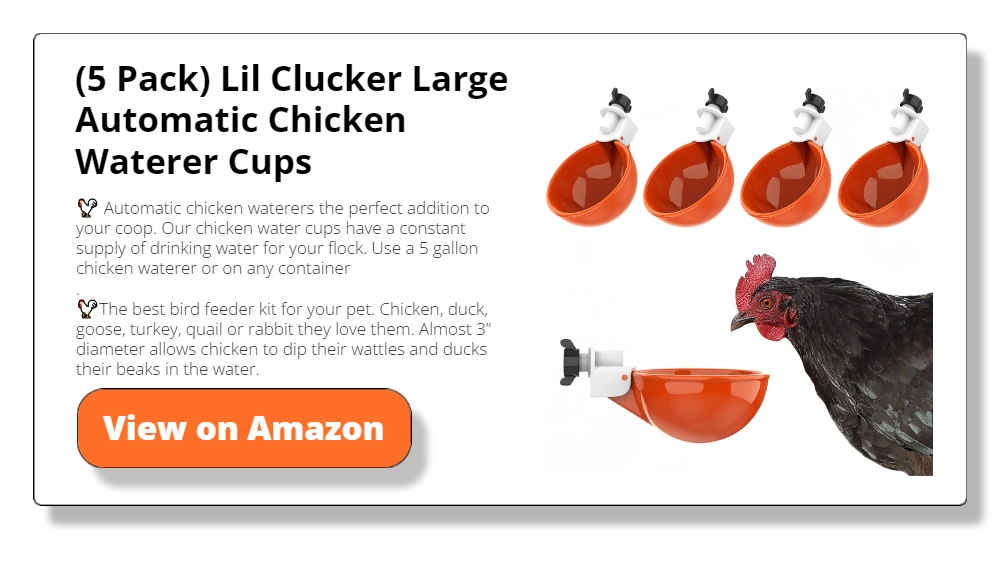
Step 2: Start by attaching your 2 PVC end caps to every end of your PVC pipes. You can apply a sealant to make sure there is no leak. Make sure the end caps are firmly attached and there are no gaps. Once the end caps are in place, you can begin drilling the middle of your PVC pipes using the 2-inch hole saw bit.
This is where you will refill your waterer. Then attach your 2-inch diameter PVC pipe, making sure it fits snugly and does not leak then cover using the 2-inch diameter end-cap (do not glue).
Step 3: Using the smaller bit, make holes for your screw-in nipples. For a meter-length PVC pipe, you can add up to 8 nipples in your pipe (still depends on your preference and the number of chickens you have).
Apply a sealant around every nipple to avoid leakage. If you’re adding more than one nipple to your PVC pipe, make sure to space them out evenly so that each chicken has easy access to a water source.
Step 4: Fill in the pipe with water and attach it to a wall or a platform and you’ll have an automatic chicken waterer.
Click on any image to start the lightbox display. Use your Esc key to close the lightbox.
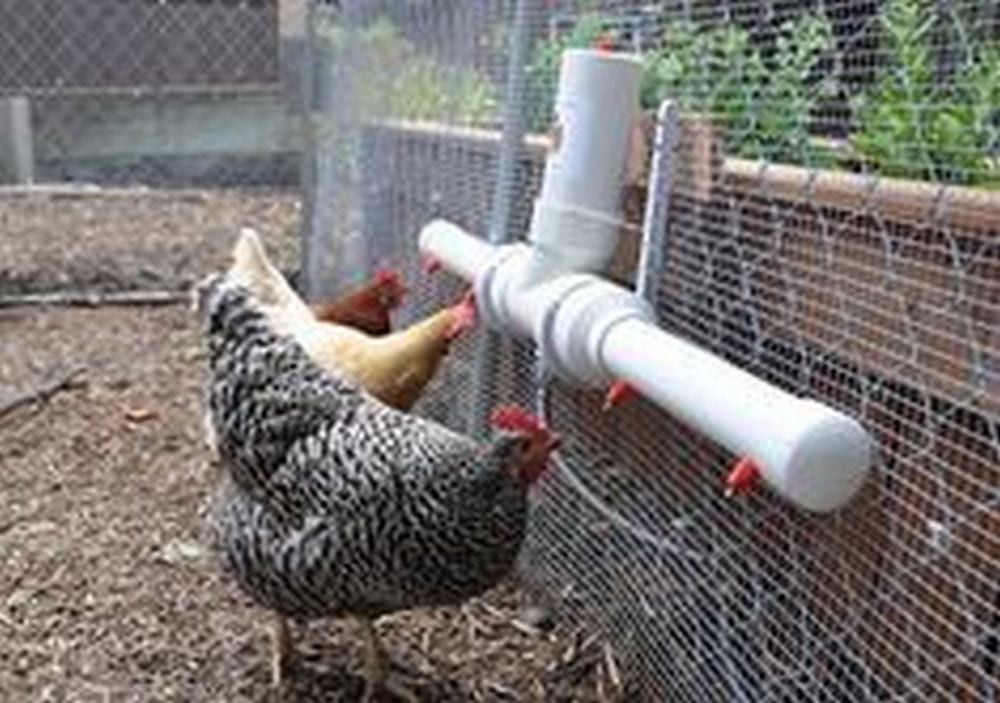

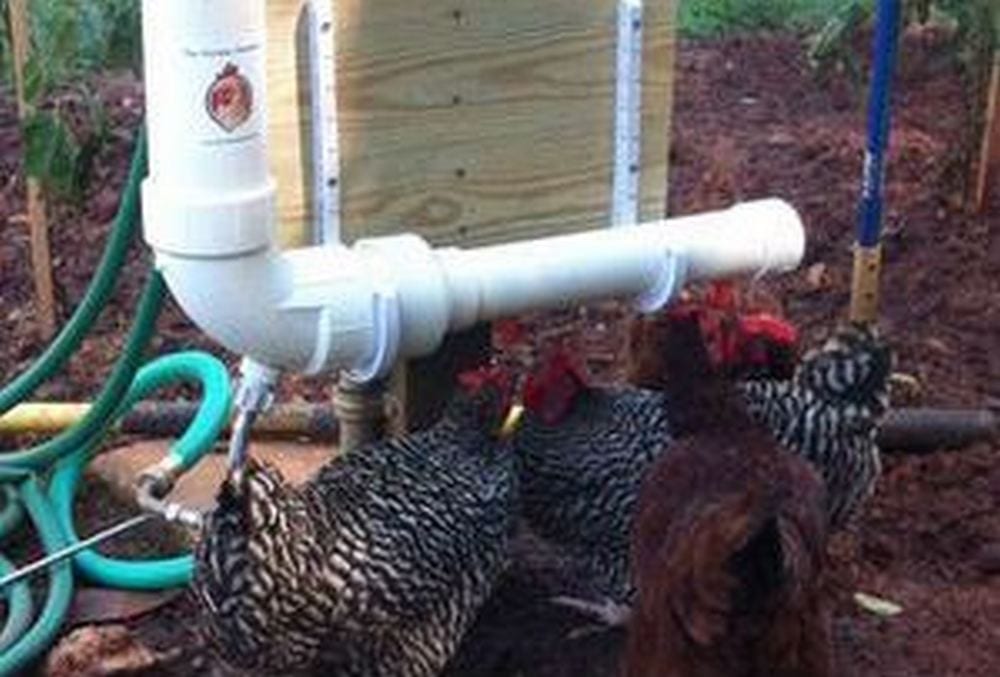

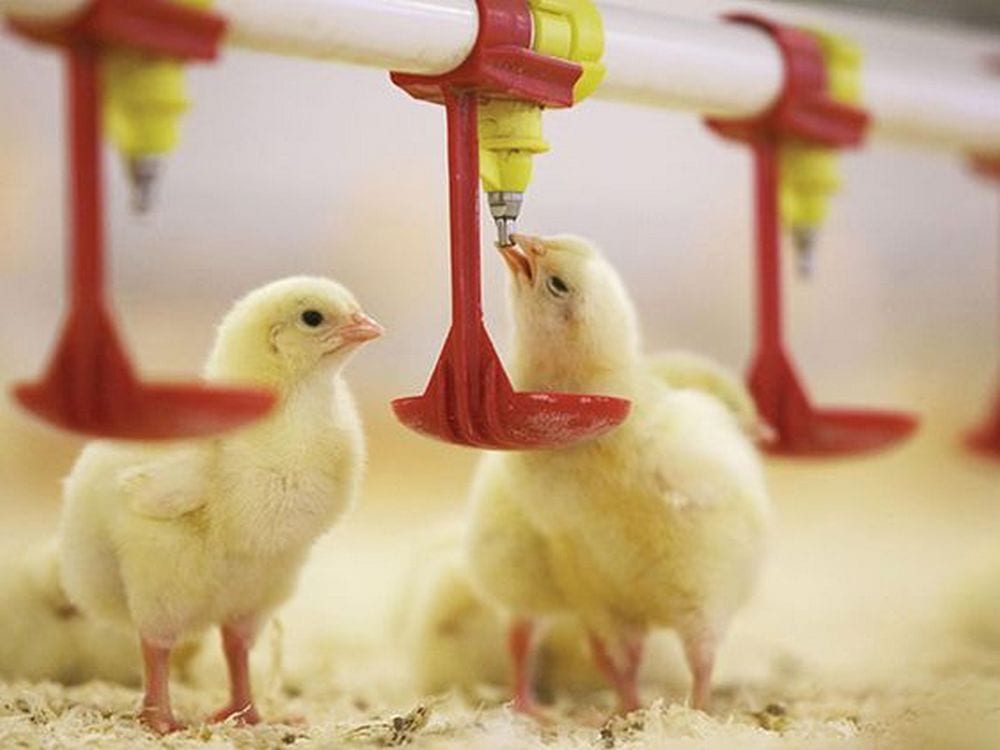
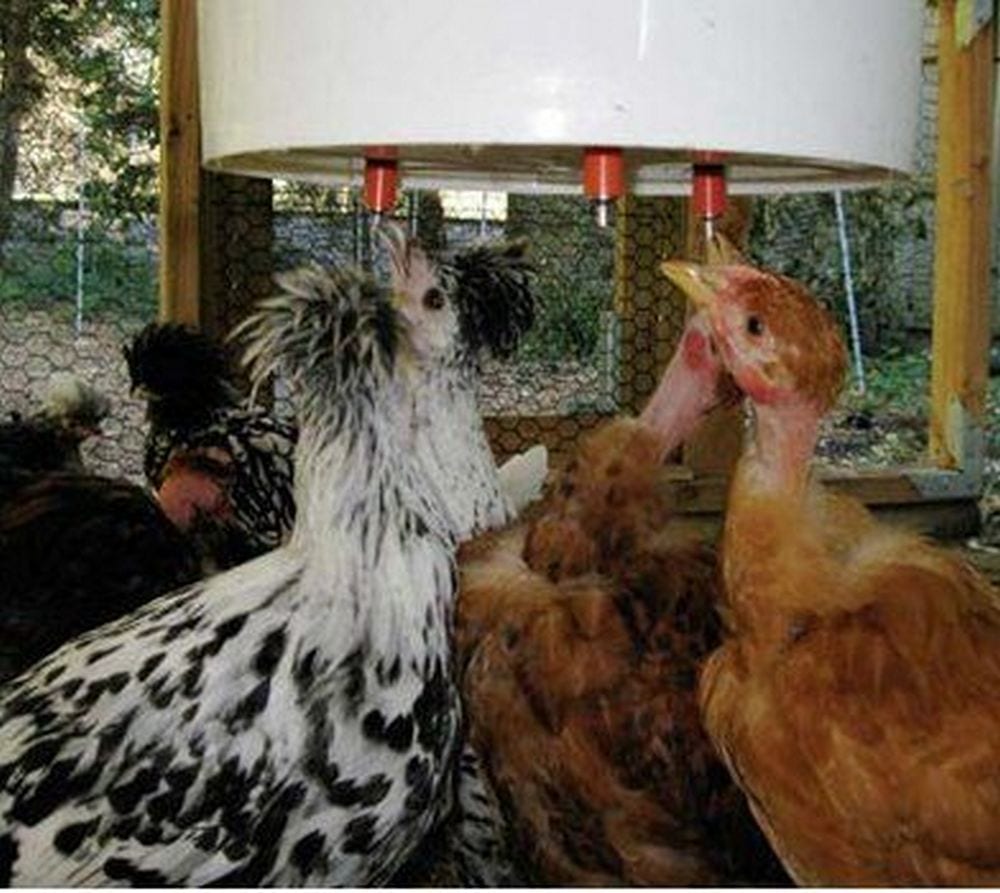

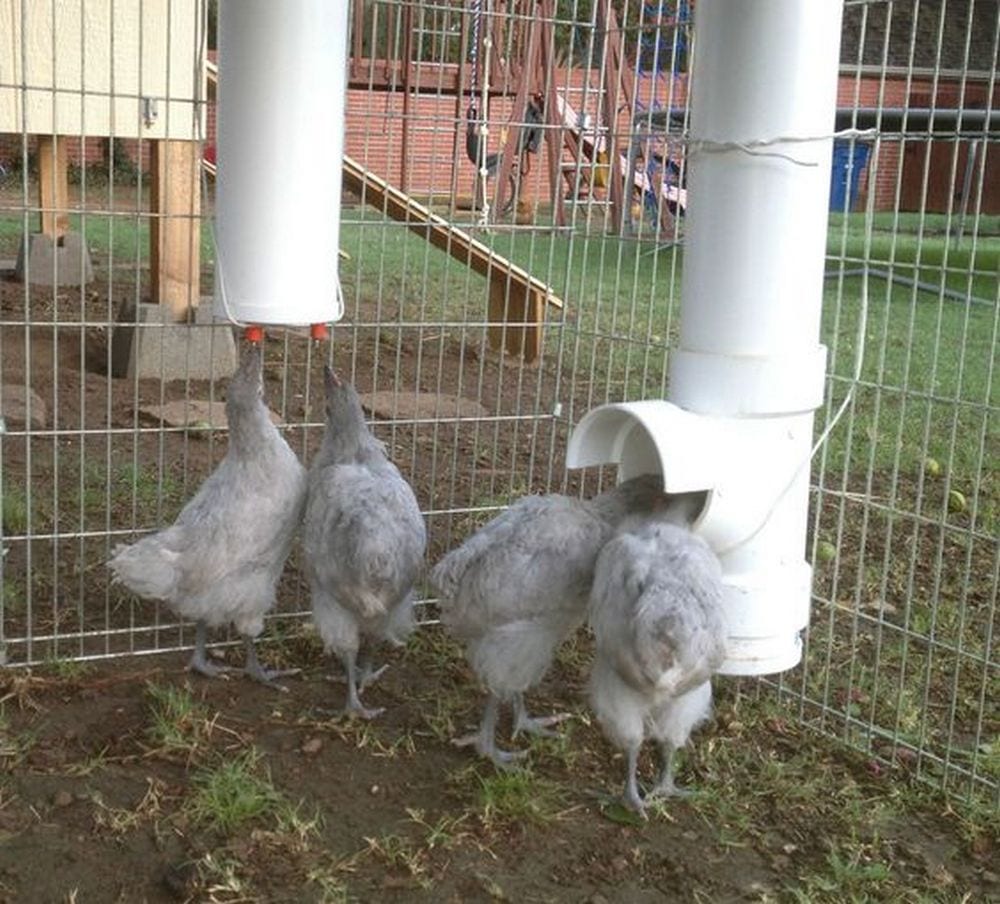
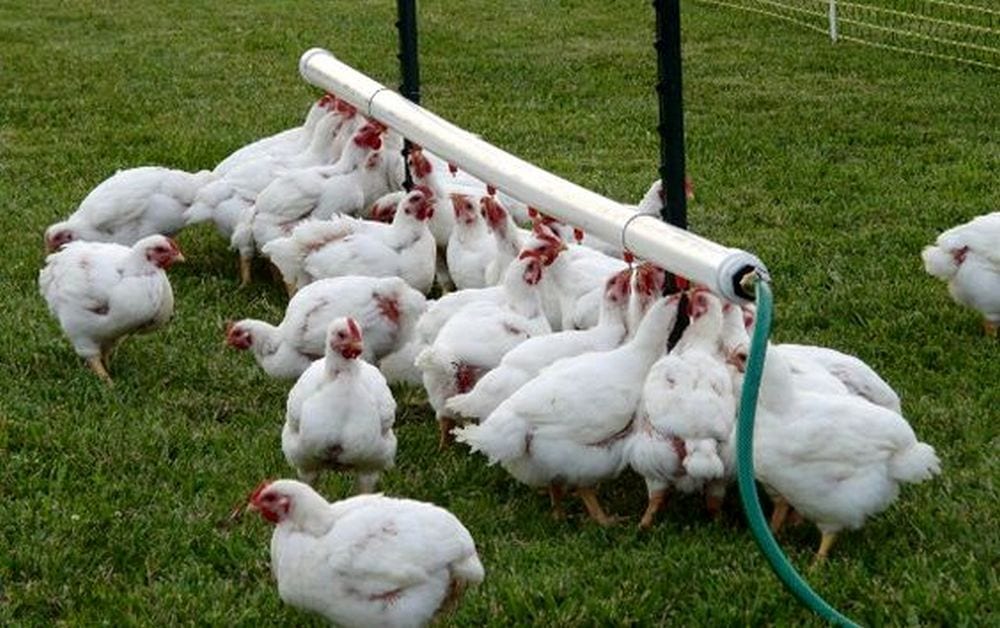
Here’s another version of the chicken waterer prepared for you, watch the video below to learn how to DIY an automatic chicken waterer with nipple drippers.
Benefits of Using an Automatic Chicken Waterer
Your hens’ health and output depend on you giving them a steady supply of clean water.It seems rather robotic, this stuff.
Managing the watering requirements of your chickens is made easier with an automatic chicken waterer. We look at the many advantages of including an automatic chicken waterer into your routine for caring for your birds here.
Consistent Water Supply
The guarantee of a constant water supply is one of the main advantages of an automatic chicken waterer. For both their daily needs and to keep producing eggs, chickens must always have access to water. Every time the chickens need water, an automatic chicken waterer makes sure it’s there and won’t run out.
Improved Hygiene
Automatic chicken waterers are specifically designed to reduce the chances of water contamination. Traditional water bowls can easily be soiled by dirt, feed, or droppings, but an automatic system minimizes these risks. By providing a cleaner water source, you help prevent the spread of diseases and keep your flock healthier.
Labor-Saving Convenience
Using an automatic chicken waterer can significantly reduce the workload for chicken keepers. Traditional methods often require frequent checks and refills throughout the day. With an automatic system, the need for constant supervision is diminished, freeing up time for other important tasks around the farm or in the garden.
Reduced Waste and Cost Efficiency
Lastly, an automatic chicken waterer helps in reducing water waste. These systems are designed to provide water on demand, thereby minimizing excess spillage and reducing the overall water usage. This not only helps in conserving water but also makes the process cost-efficient over time by cutting down on wasted resources.
Incorporating an automatic chicken waterer into your coop not only promotes the well-being of your chickens but also enhances the efficiency and cleanliness of your poultry management practices. With these compelling benefits, it’s clear why many poultry enthusiasts are making the switch to this innovative watering solution.
Troubleshooting Common Issues with an Automatic Chicken Waterer
While automatic chicken waterers are a great way to ensure your chickens always have access to clean water, they can occasionally encounter issues. Knowing how to troubleshoot common problems can help you maintain an efficient and reliable water system.
Here’s how to address some of the typical challenges that might arise with an automatic chicken waterer.
Leaks and Drips
Symptoms: Water pooling around the waterer or excessive dripping when not in use.
Solutions:
- Check and Tighten Connections: Ensure all fittings and connections are tight and secure. Loose parts can often be the cause of leaks.
- Replace Worn Out Parts: Over time, parts such as washers or o-rings can wear out. Replacing these components can usually fix leaks.
- Adjust Water Pressure: Sometimes, high water pressure can cause leaks. Try adjusting the pressure to see if it resolves the issue.
Blockages
Symptoms: Reduced water flow or no water at the nipples.
Solutions:
- Clean the Nipples: Detach the nipples and clean them thoroughly. Dirt or debris can block the flow of water.
- Flush the System: Run water through the system without the nipples attached to clear out any debris inside the pipes.
- Check for Airlocks: Ensure there are no air pockets in the pipes, as these can disrupt water flow.
Contaminated Water
Symptoms: Water appears dirty or discolored; chickens are reluctant to drink.
Solutions:
- Regular Cleaning: Clean the entire system regularly to prevent algae and sediment buildup.
- Install a Filter: Adding a water filter can help remove impurities before they reach your chickens.
- Use Fresh Water: Ensure the water source is clean and fresh. Regularly replacing the water can prevent contamination.
Frozen Lines (in cold climates)
Symptoms: No water flow during freezing temperatures.
Solutions:
- Insulate Pipes: Wrap the water lines with insulation to protect them from cold temperatures.
- Use a Heated System: Consider upgrading to an automatic chicken waterer with a built-in heating element to prevent freezing.
By familiarizing yourself with these common issues and their solutions, you can ensure your automatic chicken waterer continues to provide a reliable source of clean water to your chickens. Regular maintenance and prompt troubleshooting are key to avoiding disruptions in water supply and keeping your flock healthy and hydrated.
Hydration Made Easy!
Discover the path to poultry paradise with this step-by-step guide to building a budget-friendly DIY automatic chicken waterer with nipple drippers. In a mere four straightforward steps, you are poised to transform the way you nurture your beloved feathered friends.
Through this simple process, you’ll establish a consistent, pristine water supply that ensures their hydration needs are always met. Simultaneously, you’ll find that this ingenious setup significantly reduces the demands of your daily chicken care routine, affording you more time and peace of mind.
Bid adieu to the repetitive task of refilling water containers each day, and welcome the era of unrivalled convenience and contentment for your feathered friends. Prepare yourself to embark on a journey that is both straightforward and budget-friendly, leading to the delight of happier, well-hydrated hens.
What are your thoughts on the idea of crafting your very own DIY automatic chicken waterer with nipple drippers?

